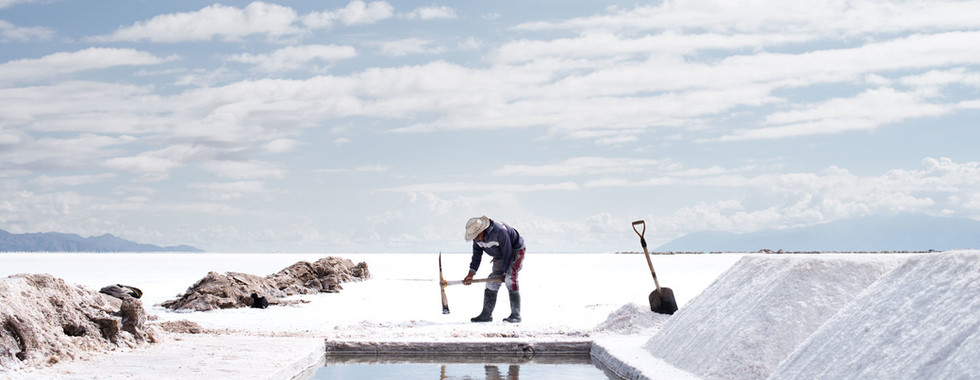Felix Dorn, University of Vienna 21 April 2023
Activity: CEDLA Lecture & Opening of the Photo Exhibition ABOUT THE LECTURE: The global transition to a ‘green’ energy system is increases the demand and extraction of certain ‘critical’ resources, including lithium. This growing demand for raw materials has sparked a new debate on the global interdependencies and unevenness of the emergent energy transition. In this lecture, Felix Dorn discusses this strand of literature, and argues that the global interconnections of the green energy transition influence the transition imaginaries, ideas, goals, and decisions of different localities of extraction. Highlighting actors, institutions, conflicts, narratives and material dimensions, the political economy of lithium mining and energy transition in Argentina reveals the reproduction of an emerging new ‘green’ consensus based on techno-optimism, ecological modernization and green growth.
ABOUT THE PHOTO EXHIBITION: Gold rush in the 'lithium triangle'
The light metal lithium, an important element for Li-Ion batteries, is now considered a strategic resource for the 21st century. The electrification of transport is expected to make a decisive contribution to reducing anthropogenic CO2 emissions. Lithium plays a key role in this. While only 2-3g of lithium are used in a smartphone battery, the production of an electric vehicle requires an average of 8-40kg, about ten thousand times that amount. The world's largest (and most profitable) lithium deposits are found in South America's so-called ‘lithium triangle’, which stretches from the Salar de Uyuni (Bolivia) to the Salar de Atacama (Chile) and a series of smaller salt flats in northwest Argentina. In recent years, the boom around the ‘white gold’ lithium has given rise to a large number of new mining projects.
With an average of 38-200mm of rainfall per year, this region (Puna-Atacama-Altiplano) is one of the driest areas on earth. Characterised by volcanic rocks, salt deserts, steppe and sand dunes, this high desert has been inhabited for centuries by indigenous communities, especially Atacameños, Kolla, Lickanantay and Quechua. Historically marginalised in the global and respective national context, due to the sharp increase in lithium extraction many communities suddenly find themselves at the centre of global economic processes. The local population is increasingly polarised: On the one hand, lithium mining revitalises hopes for wage labour and economic development; on the other hand, the large-scale concessioning of indigenous territories results in a restriction of traditional activities and great concern for local water resources. As a result, roadblocks and local protests take place in some cases.
The case of lithium exemplifies that new technologies always reflect the social relations they emerge from and are often based on exclusive access to (strategic) resources, reproducing and creating socio-ecological inequalities. In this photo project, I use the example of lithium to explore how dominant narratives about the energy transition make a region align itself with the export of a single raw material and how this influences the self-perception of the inhabitants. The social construction of the ‘lithium triangle’ thereby contrasts the diverging local ideas of development and modernity. At the same time, far-reaching changes, adaptations, and hybrids also take place in the villages and indigenous communities.
.png)










Kommentare